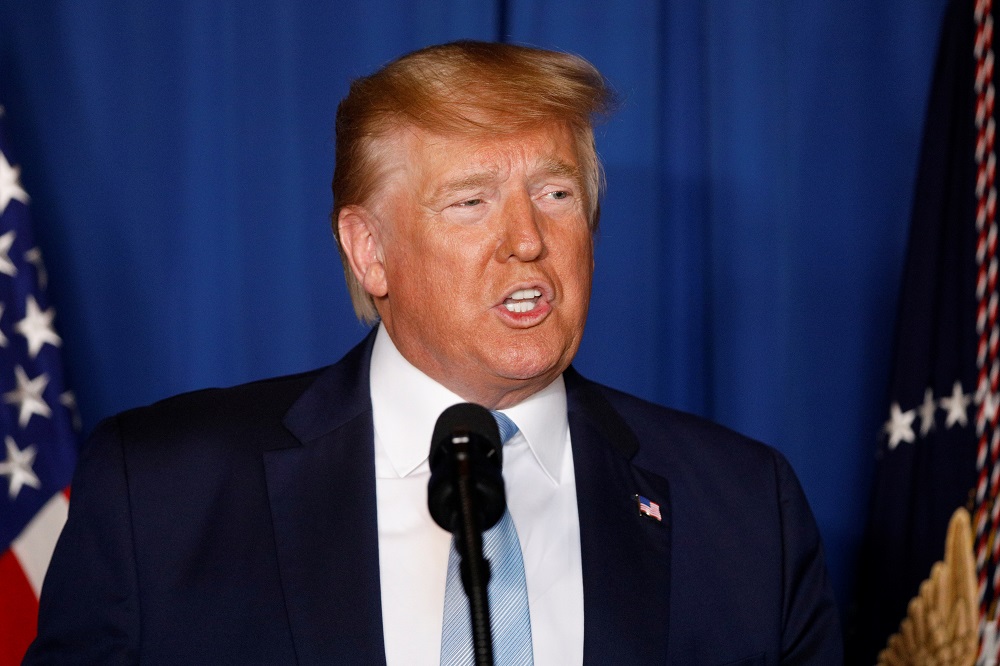WASHINGTON, Jan 11 — The United States piled new sanctions on Iran’s already crippled economy yesterday and defended the killing of a top Iranian leader, saying he had been planning an “imminent” attack on US embassies.
The sanctions, announced at the White House, marked the latest salvo in a US-Iranian confrontation that risked sliding into war a week ago with the deadly US drone attack on general Qasem Soleimani, who was by some measures the second most influential person in Iran.
In response, Iran fired volleys of ballistic missiles at Iraqi bases housing US troops, without causing casualties.
While President Donald Trump said he would not respond further militarily, Washington is intent on maintaining pressure.
The sanctions mean “we will cut off billions of dollars of support to the Iranian regime,” Treasury Secretary Steven Mnuchin told reporters at the White House.
The measures targeting Iran’s steel industry and eight state officials came on top of massive sanctions already aimed at bringing the country’s economy to its knees.
US Secretary of State Mike Pompeo told reporters that sanctions so far “have deprived the regime of billions in revenue.”
“Oil revenues (are) down by 80 per cent and Iran cannot access roughly 90 per cent of its foreign policy reserves,” he said. “As long as Iran’s outlaw ways continue we will continue to impose sanctions.”
Among the senior Iranian officials targeted in the new measures were Ali Shamkhani, the secretary of Iran’s Supreme National Security Council, Mohammad Reza Ashtiani, the Iranian armed forces deputy chief of staff and Gholamreza Soleimani, the head of the Basij militia, a volunteer force loyal to the regime.
Seventeen Iranian metals producers and mining companies were listed.
The sanctions also included a network of three entities that are based in China and the Seychelles as well as a vessel “involved in the purchase, sale, and transfer of Iranian metals products,” the Treasury said in a statement.
‘Imminent’ threat questioned
Critics are questioning why Trump — who has been impeached and faces a Senate trial in the coming days — ordered Soleimani’s killing last week.
US media reported yesterday that the American military allegedly targeted an additional Iranian official, Abdul Reza Shahlai, who is a senior officer of Iran’s elite Quds Force, in a top-secret mission on the same day in Yemen.
Shahlai was not killed, but the reports beg further questions about whether Trump was indeed acting to prevent an additional attack by Soleimani or carrying out a broader campaign against the Islamic Revolutionary Guard Corps.
The administration has pushed back against accusations that Trump acted recklessly, insisting longtime US foe Soleimani was on the brink of launching an attack and had to be stopped.
On Thursday, Trump said that Soleimani had been planning to blow up the US embassy in Baghdad. However, officials did not back up that scenario.
Then yesterday, Trump shifted, saying “probably it was going to be the embassy in Baghdad.”
“I can reveal that I believe it would have been four embassies,” Trump added in an excerpt of an interview due to air later on Fox News.
Earlier, Pompeo said the US had specific information on “imminent” attacks “against American facilities, including American embassies, military bases.”
But he added he did not know what day they were planned for.
The United States has been at loggerheads with Iran, a fierce regional rival of US allies Israel and Saudi Arabia, for decades.
Soon after Trump came into office he withdrew from an international accord meant to give Iran the ability to develop civilian nuclear power while under supervision. Trump claimed that Tehran was cheating and trying to obtain a nuclear weapon.
At a reelection campaign rally in Ohio on Thursday, Trump referred to Soleimani as “the world’s top terrorist.”
“He was a bloodthirsty terror and he’s no longer a terror. He’s dead.” — AFP






















